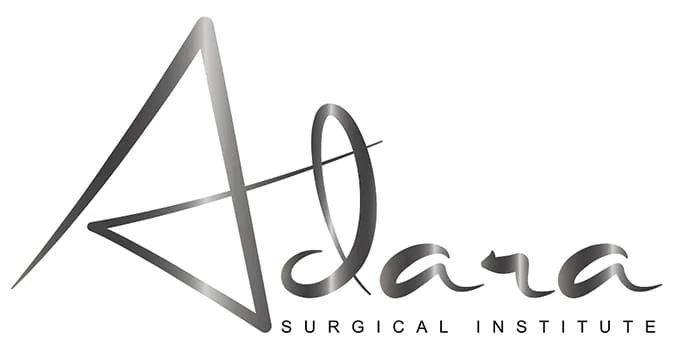At Adara Surgical Institute, we specialize in bone grafting procedures that restore lost bone, ensuring a stable and long-lasting solution for your dental health.
Understanding Jaw Bone Deterioration
Jawbone deterioration occurs when the bone in your jaw gradually weakens or shrinks. This often happens after tooth loss, when the bone no longer receives the stimulation it needs to stay strong.
Gum disease can also play a role by damaging the surrounding support structures. Other causes can include injury, aging, or certain medical conditions.
If left untreated, bone loss can make chewing more difficult, impact speech, and eventually change the shape of your face, leading to a sunken or aged appearance.
What Is Dental Bone Grafting?
Dental bone grafting is a procedure that helps rebuild and strengthen areas of the jaw that have lost bone.
During the procedure, bone grafting material is placed in the affected area, which helps stimulate the body’s natural bone growth process.
Over time, the graft integrates with existing bone, restoring volume and providing a stable foundation for dental implants or other restorative treatments.
Bone grafting helps to:
- Support dental implant placement
- Preserve the shape and strength of the jawbone
- Prevent further bone loss
Types of Bone Graft Materials
There are different bone graft materials used in oral surgery, depending on the patient’s needs:
- Autogenous: Bone is taken from the patient’s own body (often from the chin, hip, or another part of the jaw). This method promotes natural bone growth but requires an additional surgical procedure.
- Allografts: Bone sourced from a human donor and processed to be safe for use.
- Xenografts: Bone obtained from an animal source, usually bovine.
- Synthetic: Biocompatible materials designed to encourage bone formation without using natural bone.
Common Dental Bone Grafting Procedures
Several types of bone grafting procedures are available, depending on the extent and location of bone loss. These treatments help rebuild and strengthen the jawbone, ensuring better function and long-term oral health.
Socket Preservation
Also known as ridge preservation, socket preservation is performed immediately after tooth loss or extraction.
The goal is to maintain the bone structure and prevent deterioration before a dental implant procedure. The bone graft material is placed into the empty socket to stimulate bone formation and healing.
Ridge Augmentation
When significant bone loss has occurred, ridge augmentation is necessary to restore the natural contour of the jaw.
This procedure increases the width and height of the alveolar bone (the part of the jawbone that holds the teeth in place), allowing for dental implants to be securely placed in the future.
Sinus Lift
A sinus lift is a specialized dental bone graft procedure used when there is insufficient bone in the upper jaw, particularly in the molar region.
During a sinus lift, the oral surgeon lifts the sinus membrane and places bone graft material underneath to create enough space for implant placement.
The Dental Bone Grafting Procedure
When performed at Adara Surgical Institute, the bone grafting procedure generally follows these steps:
- Initial consultation: The oral surgeon examines your jaw using digital imaging to assess bone loss and determine the best treatment approach.
- Bone graft placement: In a surgical procedure, the selected bone graft material is carefully placed in the targeted area to encourage bone growth and regeneration.
- Healing and integration: Over the next few months, the graft fuses with existing bone tissue, restoring strength and volume.
- Next steps: If the bone graft was placed in preparation for dental implants, your oral surgeon will evaluate healing progress before scheduling implant placement.
Recovery and Healing
Patients typically experience mild swelling and discomfort after the surgical procedure. Faster healing can be achieved with:
- Proper oral hygiene
- Avoiding smoking and excessive alcohol consumption
- Following post-operative care instructions
Why Choose Adara Surgical Institute For Dental Bone Grafting?
At Adara Surgical Institute, we bring exceptional expertise, advanced technology, and a patient-first philosophy to every procedure.
Our board-certified oral and maxillofacial surgeons, Dr. Hardeep Dhaliwal, has extensive experience in bone grafting procedures and uses state-of-the-art techniques to ensure the best possible outcomes for our patients.
Adara Surgical Institute
Schedule a Consultation
To book a consultation at our oral surgery office in Issaquah, WA, call (425) 428-5888 or visit us at 6505 226th Pl SE STE #100 Issaquah, WA.
We are located in the heart of Issaquah, WA, in the back of Meadow Creek Business Center. We have plenty of parking and easy access into our building, which is conveniently located on the first floor and easily accessible for all patients.
Request an AppointmentFAQs About Dental Bone Grafting
How painful is dental bone grafting?
Most patients experience only mild to moderate discomfort after a dental bone grafting procedure. The area is numbed with local anesthesia during the procedure, and sedation options are available for added comfort. After surgery, over-the-counter or prescribed pain medications help manage any soreness. Most patients find that discomfort subsides within a few days, and following post-operative care instructions can help ensure a smooth recovery.
Can a dental bone graft fail?
Yes, while dental bone grafting is highly successful, there is a small risk of failure. Factors such as poor oral hygiene, smoking, certain medical conditions, or inadequate blood supply to the graft site can affect healing. Signs of a failing bone graft may include persistent pain, swelling, or infection. If a graft does not integrate properly, it can often be revised with a second procedure to ensure successful bone regeneration.
Can I get a dental implant without bone grafting?
It depends on the amount of bone available in your jaw. If you have enough healthy bone to support an implant, a bone graft may not be necessary. However, if bone loss has occurred due to tooth loss, gum disease, or injury, a bone grafting procedure may be required to create a stable foundation for the implant. Your oral surgeon will assess your jawbone during a consultation to determine the best approach for your needs.
